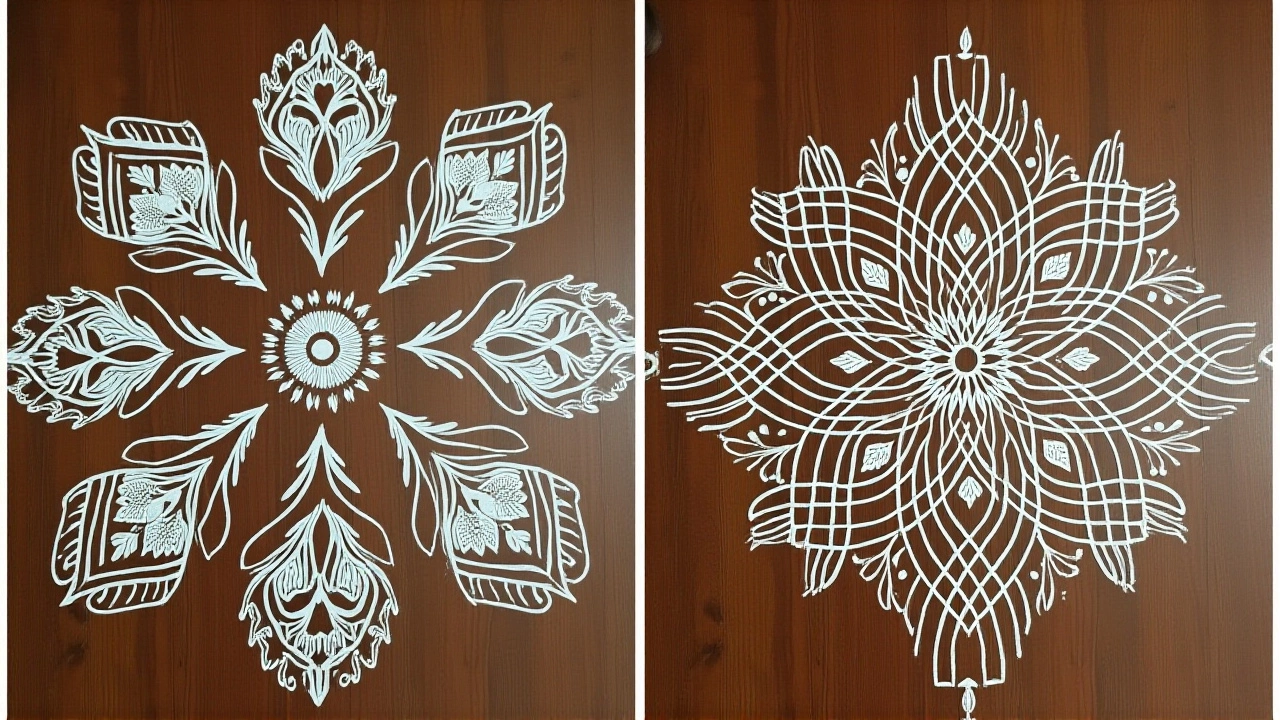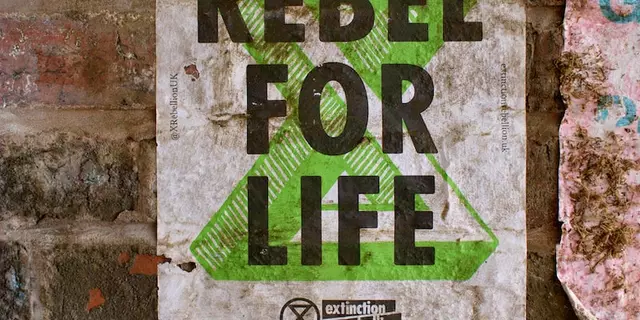When Maa Brahmcharini is worshipped on the second day of Shardiya Navratri 2025, homes across India burst into colour – but this year many are swapping powdered pigments for rice flour (चावल का आटा). The shift isn’t just aesthetic; it’s rooted in a desire for purity, sustainability, and a fresh visual language that resonates with younger devotees. By the time the sun dips behind the courtyard walls, neighbours often gather around the main gate, admiring intricate patterns that promise prosperity and divine blessings.
Why Rice Flour Rangoli Is Gaining Popularity
Here’s the thing: traditional coloured powders can be messy, especially in monsoon‑prone regions where the festival falls. Rice flour, being fine and naturally white, offers a clean canvas that absorbs moisture without clumping. Moreover, the subtle sheen it creates under floodlights adds a contemporary sparkle, making the designs stand out in evening puja gatherings.
According to a recent survey by the Ministry of Culture, Government of India, 63% of households in urban centres reported trying rice‑flour based rangoli for the first time in 2025. The same report highlighted that the trend started in Gujarat’s Navratri fairs in 2022 and quickly spread to eastern states, driven by social‑media challenges that showcased TikTok‑style timelapse videos of designers sketching geometric motifs.
Traditional vs Modern: What Changes on the Second Day
Traditionally, each Navratri day honors a different aspect of the Divine Mother, with colour palettes reflecting that theme – red for bravery, yellow for knowledge, and so on. The second day, dedicated to Maa Brahmcharini, traditionally employs deep reds and bright oranges. But wait – many families are now opting for a monochrome base of rice flour, then adding just a splash of saffron or turmeric to accentuate key elements.
‘The purity of rice flour mirrors the spiritual cleanse we seek during the fast,’ explains Shobha Patel, a renowned rangoli artist from New Delhi. ‘When you sift the flour, you’re literally creating a fresh layer of devotion on the threshold of your home.’
Oddly enough, the texture of rice flour also lets artists craft sharper lines without the smudge often seen with powdered pigments. This precision has opened doors for more intricate geometric patterns – think interlocking hexagons, mandala spirals, and even 3‑D effects that appear to rise off the ground.
Step‑by‑Step Designs Shared by Artists
Below is a quick walk‑through of three designs that have trended on Instagram this week. Each can be completed in under an hour, making them perfect for busy households juggling work, school, and the fast.
- Sunrise Hexagon: Start with a 30‑cm circle drawn in rice flour. Inside, sketch six equal triangles, fill each with a thin line of turmeric for a golden glow.
- Lotus Petal Wave: Create a central dot, then radiate twelve petal shapes outward, using a fine sieve to dust the edges with a hint of pink powder for contrast.
- Divine Spiral: Begin at the gate’s edge, draw a spiral that widens gradually, and sprinkle sandalwood powder along the curve for fragrance and visual depth.
The key, as Patel notes, is to keep the hands dry and the flour sifted. A simple kitchen strainer works wonders for achieving even distribution.
Community Voices and Official Support
Across villages in Uttar Pradesh, community elders have reported that the aroma of fresh rice flour mingling with incense creates a more inviting ambience for the goddess. ‘We feel the house breathes easier,’ says Ramesh Singh, a local school teacher, after his family completed a rice‑flour rangoli at the front door.
Meanwhile, municipal bodies in several cities, including Jaipur and Kolkata, have issued guidelines encouraging the use of eco‑friendly materials. The guidelines, released last week, cite “reduced water pollution” and “lower health risks for children handling synthetic dyes” as primary motivations.
On the national front, the Ministry of Culture plans to feature the rice‑flour trend in its upcoming “Celebrating Sustainable Traditions” campaign, slated for a launch on October 2, 2025. The campaign will include free workshops in community centres, aiming to teach over a million participants the technique before the final day of Navratri.
What the Future Holds for Navratri Decorations
Looking ahead, experts predict that the rice‑flour movement could spark a broader revival of traditional, biodegradable art forms. Dr. Ananya Rao, a cultural anthropologist at the University of Mumbai, argues that “when sustainability meets spirituality, you get a powerful catalyst for change.” She adds that the visual impact of these designs may even influence fashion designers, who have already begun incorporating rangoli motifs into autumn‑winter collections.
But the real twist is that the simplicity of rice flour might encourage even the most hesitant households to try their hand at rangoli. As the festival draws to a close next week, many families are already planning to experiment with other edible mediums – such as gram flour and beetroot powder – for the remaining days.
So whether you’re a seasoned artist or a first‑time participant, the message is clear: a handful of rice flour, a dash of devotion, and a sprinkle of creativity can transform a modest courtyard into a radiant welcome for Maa Brahmcharini.
Frequently Asked Questions
Why is rice flour considered auspicious for Navratri rangoli?
Rice flour symbolizes purity and fertility in Hindu tradition. Its white hue is associated with new beginnings, and because it’s an edible staple, using it is believed to invite abundance and health into the household during the festival.
Can I combine rice flour with traditional coloured powders?
Absolutely. Many designers start with a rice‑flour base for its clean canvas, then add splashes of red, yellow or saffron powder to highlight specific motifs, creating a contrast that enhances visual depth.
Where can beginners learn the rice‑flour rangoli technique?
The Ministry of Culture’s upcoming "Celebrating Sustainable Traditions" campaign will host free workshops in major cities starting October 2, 2025. Additionally, local community centres and NGOs are offering short classes in many towns.
Is rice flour safer for children compared to synthetic dyes?
Yes. Rice flour is edible and non‑toxic, eliminating the risk of skin irritation or accidental ingestion that can occur with some synthetic pigments. This makes it a preferred choice for families with young kids.
Will the rice‑flour trend continue beyond Navratri?
Experts believe the sustainability angle will keep the practice alive. Already, designers are experimenting with rice‑flour motifs for weddings and other festivals, suggesting the technique could become a year‑round decorative tradition.





